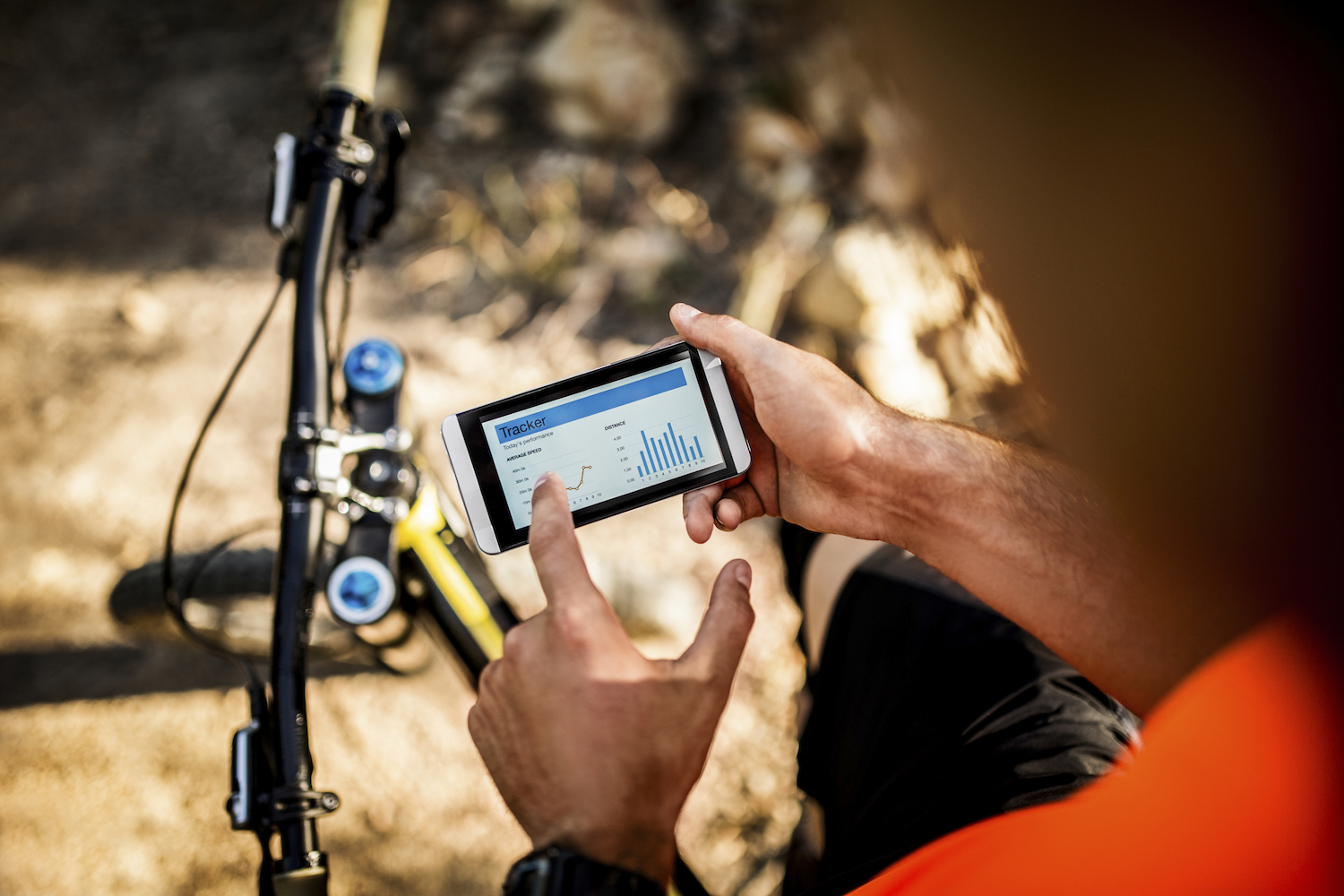Like the rest of us, the area’s top coaches and endurance athletes have faced the quandaries of when mobile apps are useful and how much to rely on them. We can learn from their experience. They mix, they match, they discard, they improvise — until they figure out what works best for them. Each of the apps listed below has a free version available for Apple or Android devices. From there, the fit is as individual as a bike or a pair of running shoes.
Getting Started: MapMyWhatever
The UnderArmour Connected Fitness empire includes MapMyRun, Hike, Walk, Fitness and Ride, which integrate with MyFitnessPal, an exercise and calorie counter that includes nutrition info for more than 5 million foods. User reviews of the free downloads praise their simplicity and ease of use, though the intro versions have annoying ads, and the calorie counter with MyFitnessPal doesn’t seem to jibe with those on other apps.
“This is great if you don’t want to spend money on a running watch or bike computer,” said Austin Hindman, who finished fourth in the Richmond (Va.) ITU Pro CAMTRI Sprint Triathlon in early May, then took first in the 4×800 and the 3,200 for Lafayette High in the Missouri Class 5 Track and Field Championships. “I used to run with MapMyRun all the time because it gives you great data such as pace, time, and distance — and it’s free.”
Brand Loyal: Garmin Connect
The popular line of Garmin gadgets work best with this app, though the company claims other GPS-based activity trackers are compatible. Android users give it just 3.3 out of 5 stars, though, because of connectivity issues.
“This app has evolved from being incredibly clunky to having a highly functional user interface, fast Bluetooth uploading from the device — even while you are riding or running, if you have your phone with you,” said Sunny Gilbert, a former pro triathlete and 2014 USA Cycling Cyclocross Masters Champion.
Socially Motivated: Strava
Users give this app 4.5 out of 5 stars for its ease of use, versatility and social motivation. Many rave about “Segments,” sections of popular routes on which the Strava community competes. It also gets high marks for integrating with almost all GPS devices and activity computers.
Gilbert called Strava, “the fun and nerdy side of training. It has a little overemphasis on speed and competition, but it’s a lot better than posting a workout on Facebook. This has really helped me on lonely rides in October, when it seems like every other cyclist is starting to enter a race phase, and I’m just getting going with my fitness for cyclocross.”
Serious Results: TrainingPeaks
Elite athletes and coaches turn to TrainingPeaks to coordinate workouts. The app integrates mobile and desktop versions smoothly to plan, track, analyze and share workouts and results. The premium service, $119 a year for athletes, allows you to tap into TrainingPeaks Coach and a library of workouts. A few users online complain that syncing with certain GPS devices is clunky and that the mobile app doesn’t show as much data as the desktop version.
“This is a great app for training because it organizes any and all workouts that you have into a calendar,” Hindman said. “It makes online coaching much easier and accessible.”
Gilbert added: “Since using this app for two years, my race preparation, rest and training have become really dialed in. And I love the ‘Charts’ feature, which allows me to track each metric over time. I’m not too proud to admit that both Strava and TrainingPeaks have gotten me out the door for a late-night ride or run when I didn’t think I had time, and I was grateful. Keeps us honest.”
Deep Woods: Off?
Several free apps provide aids for hiking, camping and other outdoor activities. BackCountry Navigator lets you plan a route using maps from OpenStreetMap, OpenCycleMap and official mapping agencies. Ramblr is good for hikers and backpackers who like to journal with audio, video, pictures and text. AllTrails provides reviews, photos and maps for more than 50,000 trails.
None of the outdoor enthusiasts we interviewed, though, recommended anything fancier than Strava or Google Maps, the latter of which “saved my butt several times out wandering random forest service roads,” said Jim Davis, a mountain biker with Gateway Off-Road Cyclists (GORC) and a member of the Ozark Trail Association.
Seems that getting away from it all can mean getting away from tech. Luke Nurnberger, director of marketing and activities at Upper Limits Rock Climbing Gym, said he uses the Weather Channel app “for safety and preparedness. But I tend to stray from most apps designed for use in the outdoors. I’m typically practicing minimalist techniques, and having a mobile phone with all the bells and whistles is definitely not a reliable addition to my 10 essentials when venturing into harsh, remote environments.”
Author: Kathleen Nelson is a regular contributor to Terrain magazine


Leave A Comment